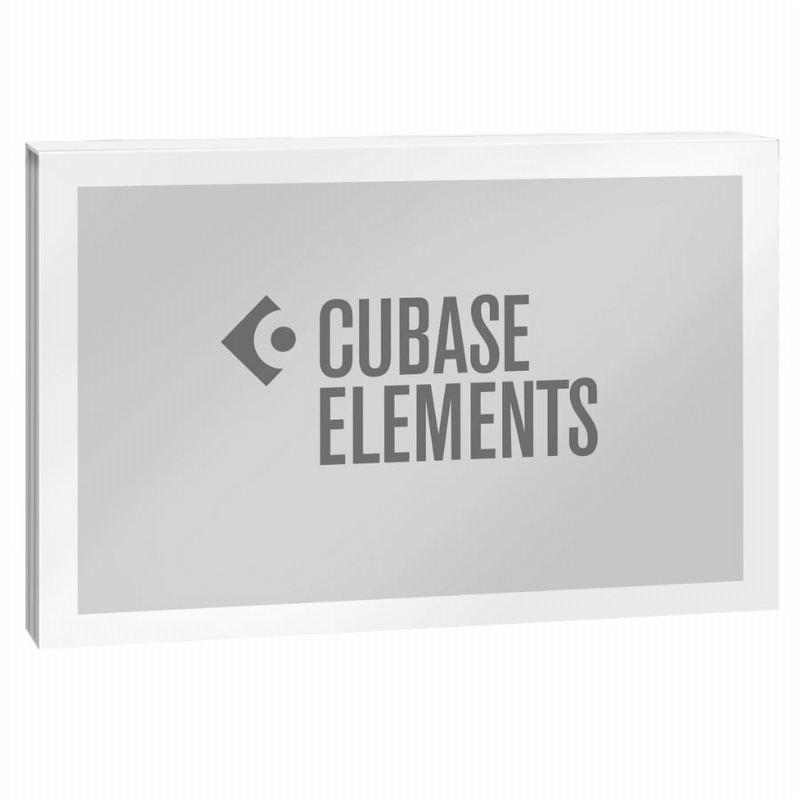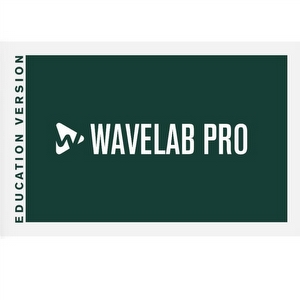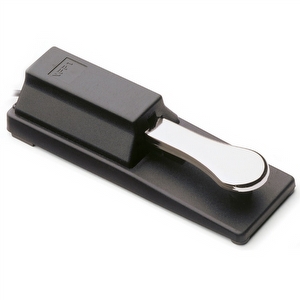Steinberg Cubase Elements 13 - DAW Software
Why Joh.deHeer?
- 126 Years of experience
- 2500M2 Showroom
- Effective Customer Service
- Customers rate Joh.deHeer 9.5/10
- Description
- Specifications
- Graduated calculations
- Demonstration request
Cubase
Cubase is one of the best recording programs in the industry. Cubase is thus increasingly used by professionals. This is because Cubase is a versatile program that works very intuitively. There are technically three different versions of Cubase: Elements, Artist, and Pro. These three versions have different prices and consequently also different functions and plug-ins. Elements is the most affordable version and has thus the least functions and plug-ins, whilst Pro has all the functions and plug-ins. The Artist version falls exactly in between the two. These three versions make Cubase a lot more accessible for beginners because you can already do a lot with just Elements without having to pay hundreds of euros. Do you want to upgrade? No problem, you don’t have to pay the full price of the next program but only the upgrade price.
Elements
Elements is insanely cheap considering what you get. You can record different instruments and vocals with so little latency it won’t even be noticeable. Furthermore, all the bars are separated in handy boxes which makes synchronising, cutting, pasting, and dragging a lot easier. The system also has a built-in metronome so you can record your parts whilst staying on beat. Do you dislike the sound of the metronome? No problem, you can choose between different sounds and pitches. Recorded audio is also easy to edit with the added tools (like fades and EQ), effects, and plug-ins. Consequently, you can make the recording as beautiful as possible. Additionally, Steinberg made sure that there are sounds, effects, and plug-ins for every single genre possible. The program can be used with MIDI devices or through an interface.
The differences
Although upgrading isn’t more expensive than buying a bigger version, so Elements is still a recommended start, it is important to know what functions and plug-ins Elements doesn’t have that the other versions do. One of the most important differences is that Elements has a limited amount of tracks, with a maximum of 48 audio tracks and 64 MIDI tracks. For most modern music this is probably sufficient, but if you want to add many instruments or harmonies it can run out quickly. On the other hand, Artist and Pro have an unlimited amount of tracks. Another important difference is that Artist and Pro have more plug-ins, like guitar and bass amps and master tools, than Elements. However, Elements has a relatively large amount of plug-ins which will be sufficient for some. Furthermore, you can buy plug-ins separately and use them with Elements. With Elements you are also limited to 16 groups whereas Artist has a limit of 32 and Pro has a limit of 256. Lastly, Elements simply has the least amount of functions that make recording, mixing, and mastering a lot easier and faster. Functions that Elements doesn’t have include: Workspaces, Advanced Audio Export, Tempo Track, Global Transpose Track, Note Expression, Comping, Group Editing, and many more.
Keep in mind: this product is software, there are no physical items included.
Features:
- Channel Strip
- Chord Pads
- MIDI Remote
- Scale Assistant
- MediaBay
- Latency Monitor
- Chord Track
- Score Editor
- Audio to MIDI Chords
- Arranger Track
- Chord Assistant
- Hermode Tuning
- Punch In/Punch Out
- Metronome Click
- Marker Track
- Key Editor
- Drum Editor
Instruments:
- Groove Agent SE
- Halion Sonic 7
Sounds, effects, and presets:
- Hard Nocks
- Noir
- Nightcall Synthwave
- Dancefloor Tech House
- Lofi Dreams
- Bloom
- Analog Techno
- Blockbuster
- Caleidoscope
- EDM Toolbox
- Mystic Spaces
- Raw Ambience
- Soul Assembly
- The Hip Hop Vault
- Production Grooves
- Production Presets
- Allen Morgan Signature Drums
- Allen Morgan Rock-Pop Toolbox
- DJ EQ
- Standard Channel EQ
- Studio EQ
- Vintage Compressor
- Squasher
- Maximizer
- Tube Compressor
- De Esser
- Limiter
- Envelop Shaper
- Compressor
- VST Dynamics
- Brickwall Limiter
- Gate
- Midi Gate
- RoomWorks
- RoomWorks SE
- Stereo Delay
- Ping Pong Delay
- Mono Delay
- VST Amp Rack
- Bit Crusher
- Distortion
- Da Tube
- Grungelizer
- Channel Tape Saturation
- Channel Tube Saturation
- Amp Simulator
- Mono to Stereo
- Stereo Enhancer
- Tuner
- Lin One Dither
- Morph Filter
- Step Filter
- Dual Filter
- Tone Booster
- Wah Wah
- Pitch Correct
- Octaver
- Auto Pan
- Metalizer
- Chopper
- Phaser
- Rotary
- Flanger
- Chorus
- Tremolo
- Vibrato
- Ring Modulator
- Tranceformer
Would you like to test this product?
Visit our store and try it out.
- Description
- Specifications
- Channel Strip
- Chord Pads
- MIDI Remote
- Scale Assistant
- MediaBay
- Latency Monitor
- Chord Track
- Score Editor
- Audio to MIDI Chords
- Arranger Track
- Chord Assistant
- Hermode Tuning
- Punch In/Punch Out
- Metronome Click
- Marker Track
- Key Editor
- Drum Editor
- Groove Agent SE
- Halion Sonic 7
- Hard Nocks
- Noir
- Nightcall Synthwave
- Dancefloor Tech House
- Lofi Dreams
- Bloom
- Analog Techno
- Blockbuster
- Caleidoscope
- EDM Toolbox
- Mystic Spaces
- Raw Ambience
- Soul Assembly
- The Hip Hop Vault
- Production Grooves
- Production Presets
- Allen Morgan Signature Drums
- Allen Morgan Rock-Pop Toolbox
- DJ EQ
- Standard Channel EQ
- Studio EQ
- Vintage Compressor
- Squasher
- Maximizer
- Tube Compressor
- De Esser
- Limiter
- Envelop Shaper
- Compressor
- VST Dynamics
- Brickwall Limiter
- Gate
- Midi Gate
- RoomWorks
- RoomWorks SE
- Stereo Delay
- Ping Pong Delay
- Mono Delay
- VST Amp Rack
- Bit Crusher
- Distortion
- Da Tube
- Grungelizer
- Channel Tape Saturation
- Channel Tube Saturation
- Amp Simulator
- Mono to Stereo
- Stereo Enhancer
- Tuner
- Lin One Dither
- Morph Filter
- Step Filter
- Dual Filter
- Tone Booster
- Wah Wah
- Pitch Correct
- Octaver
- Auto Pan
- Metalizer
- Chopper
- Phaser
- Rotary
- Flanger
- Chorus
- Tremolo
- Vibrato
- Ring Modulator
- Tranceformer
- Graduated calculations
- Demonstration request
Cubase
Cubase is one of the best recording programs in the industry. Cubase is thus increasingly used by professionals. This is because Cubase is a versatile program that works very intuitively. There are technically three different versions of Cubase: Elements, Artist, and Pro. These three versions have different prices and consequently also different functions and plug-ins. Elements is the most affordable version and has thus the least functions and plug-ins, whilst Pro has all the functions and plug-ins. The Artist version falls exactly in between the two. These three versions make Cubase a lot more accessible for beginners because you can already do a lot with just Elements without having to pay hundreds of euros. Do you want to upgrade? No problem, you don’t have to pay the full price of the next program but only the upgrade price.
Elements
Elements is insanely cheap considering what you get. You can record different instruments and vocals with so little latency it won’t even be noticeable. Furthermore, all the bars are separated in handy boxes which makes synchronising, cutting, pasting, and dragging a lot easier. The system also has a built-in metronome so you can record your parts whilst staying on beat. Do you dislike the sound of the metronome? No problem, you can choose between different sounds and pitches. Recorded audio is also easy to edit with the added tools (like fades and EQ), effects, and plug-ins. Consequently, you can make the recording as beautiful as possible. Additionally, Steinberg made sure that there are sounds, effects, and plug-ins for every single genre possible. The program can be used with MIDI devices or through an interface.
The differences
Although upgrading isn’t more expensive than buying a bigger version, so Elements is still a recommended start, it is important to know what functions and plug-ins Elements doesn’t have that the other versions do. One of the most important differences is that Elements has a limited amount of tracks, with a maximum of 48 audio tracks and 64 MIDI tracks. For most modern music this is probably sufficient, but if you want to add many instruments or harmonies it can run out quickly. On the other hand, Artist and Pro have an unlimited amount of tracks. Another important difference is that Artist and Pro have more plug-ins, like guitar and bass amps and master tools, than Elements. However, Elements has a relatively large amount of plug-ins which will be sufficient for some. Furthermore, you can buy plug-ins separately and use them with Elements. With Elements you are also limited to 16 groups whereas Artist has a limit of 32 and Pro has a limit of 256. Lastly, Elements simply has the least amount of functions that make recording, mixing, and mastering a lot easier and faster. Functions that Elements doesn’t have include: Workspaces, Advanced Audio Export, Tempo Track, Global Transpose Track, Note Expression, Comping, Group Editing, and many more.
Keep in mind: this product is software, there are no physical items included.
Features:
Instruments:
Sounds, effects, and presets:
Would you like to test this product?
Visit our store and try it out.



.jpg)
.jpg)
.jpg)
.jpg)
.jpg)
.jpg)

.jpg)




(1).jpg)


.png)
-Usb_kabel.jpg)
